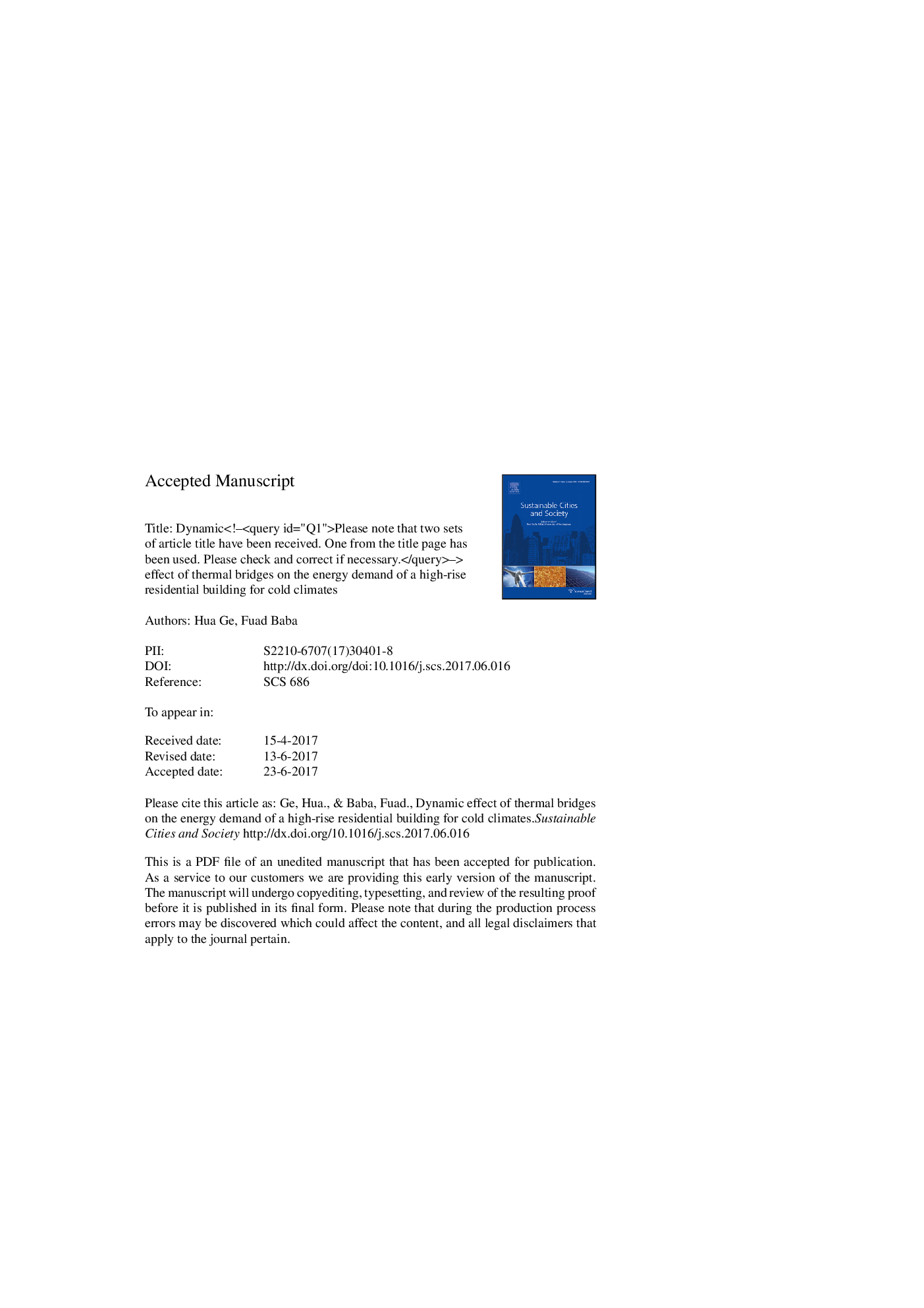| کد مقاله | کد نشریه | سال انتشار | مقاله انگلیسی | نسخه تمام متن |
|---|---|---|---|---|
| 4928187 | 1432014 | 2017 | 25 صفحه PDF | دانلود رایگان |
عنوان انگلیسی مقاله ISI
Effect of dynamic modeling of thermal bridges on the energy performance of residential buildings with high thermal mass for cold climates
ترجمه فارسی عنوان
اثر مدلسازی پویا پلهای حرارتی بر عملکرد انرژی ساختمانهای مسکونی با جرم حرارتی بالا برای هوای سرد
دانلود مقاله + سفارش ترجمه
دانلود مقاله ISI انگلیسی
رایگان برای ایرانیان
موضوعات مرتبط
مهندسی و علوم پایه
مهندسی انرژی
انرژی های تجدید پذیر، توسعه پایدار و محیط زیست
چکیده انگلیسی
This paper investigates the effect of dynamic modeling of thermal bridges on the energy performance of multi-unit residential buildings with high thermal mass under cold climates of Canada. The simulation results show that the inclusion of thermal bridges increases the annual space heating energy demand by 38-42% and decreases the annual space cooling energy demand by 8-26% for pour-in-place concrete construction for the four cities studied in the province of British Columbia, Canada. The improvement of building envelope connection details significantly reduces the contribution of thermal bridges to 3-4% for the space heating energy demand. Due to the smaller amount of thermal bridges in brick veneer construction, the inclusion of thermal bridges increases the annual space heating energy demand by 24-28%. The dynamic effect of thermal bridges on the energy performance depends on the amount and quality of thermal bridges. Compared to the 3D dynamic modeling approach, the annual space heating energy demand can be underestimated by up to 13% by the equivalent U-value method and up to 10% by the equivalent wall method, respectively. The difference between 3-D dynamic modeling and the equivalent U-value method is reduced to less than 3% when the connection details are improved.
ناشر
Database: Elsevier - ScienceDirect (ساینس دایرکت)
Journal: Sustainable Cities and Society - Volume 34, October 2017, Pages 250-263
Journal: Sustainable Cities and Society - Volume 34, October 2017, Pages 250-263
نویسندگان
Hua Ge, Fuad Baba,
